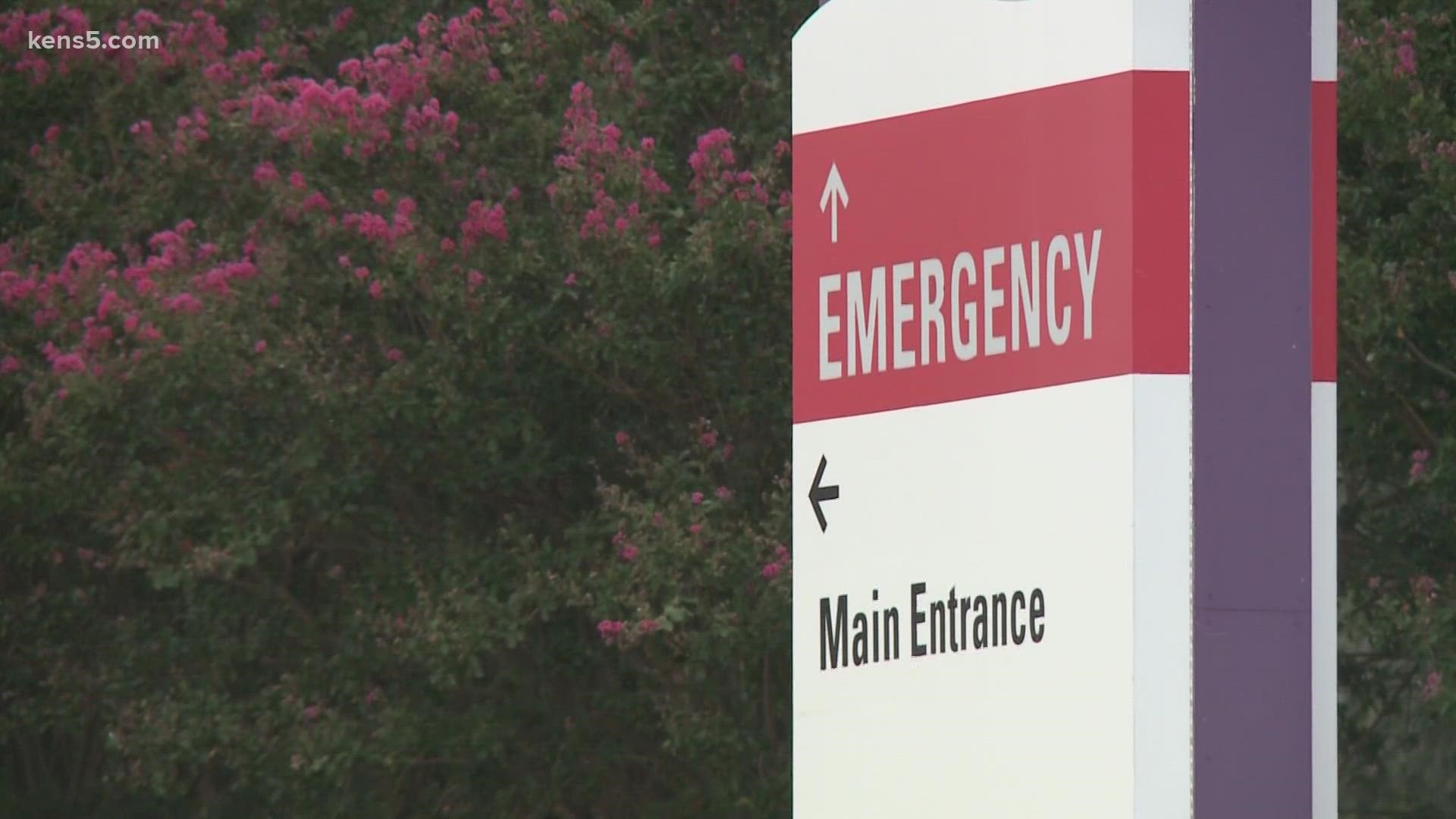SAN ANTONIO — As a rise in severe COVID cases fills hospital beds across South Texas, emergency rooms are also being impacted both by an increase in patients and the wait times needed for those who must be transferred to longer term or specialized care.
In an new episode of Commerce Street, an Eyewitness News Original podcast, KENS 5 spoke with the head of a major hospital's emergency department about the increase in both COVID patients and non COVID patients. KENS 5 also spoke with staff from freestanding ERs in surrounding areas about how those businesses are filling the gap in patient care.
Listen to the full episode below or download from Spotify, Apple Podcasts and Google Podcasts.
University Hospital's Chair of Emergency Medicine Dr. Ralph Riviello says their emergency department has seen an increase in both COVID and non-COVID patients.
"We're usually now seeing about 30-40 patients more per day, than we had been traditionally," Dr. Riviello said. "It's definitely more than what we saw a few months ago and even more than what we saw in the last surges."
The effects are also impacting freestanding emergency rooms, which operate outside of hospitals and are often the only available care, or an alternative form of care, in some communities. They differ from urgent cares in that they focus on emergency needs.
"Stomach issues, heart attacks, strokes, car accidents, broken bones, stitches, we take care of everything," said Dr. Gerardo Ortiz, Chief Medical Officer and Medical Director of the Lonestar 24 Hour ER in New Braunfels.
The surge in severe COVID cases has impacted the volume of patients at locations like Dr. Ortiz's-- and the length of time needed to secure a hospital bed for people who may need certain procedures or longer-term care.
"Typically if you have a patient in a freestanding ER that stays over 24 hours you have to report that to the state," Dr. Ortiz said. "We've had ICU patients that have stayed over 60 hours with us because you call San Antonio and Austin and they're number 80-something on the list for an ICU bed. We've had COVID patients with us that have been on oxygen for 20 hours."
Dr. Ortiz says they've adjusted scheduling and staffing to try to meet the greater need- an increase greater than what his office saw during earlier surges of the pandemic.
"The challenge with this go-around as opposed to last spring, is the state is open, we're having the typical ER emergencies and then we have COVID on top of that," Dr. Ortiz said. "The challenge is trying to serve everyone and isolate COVID to one side of the ER so we don't infect the non infected peopel with the infected people."
Dr. Jeremy Gabrysch, director of The Emergency Clinic in La Vernia, says his freestanding emergency room has also seen a large increase in daily volume of patients- both as compared to earlier this summer, and to previous summers.
"We are the first line of defense, patients come to our emergency center when they require oxygen, or an ICU bed, we get them stabilized, and then we immediately start working on a transfer and typically that would take an hour or so," Dr. Gabrysch said. "Now we're seeing that it takes days sometimes, where we're caring for these patients while our doctors and nurses are on the phone trying to get beds for these patients. In some cases we're calling hospitals as far away as Laredo or Corpus Christi even, if the beds in San Antonio are not available, just trying to find an ICU bed for a patient we are caring for in our emergency room."
While there has been an increase in patients in their freestanding ERs, both Dr. Gabrysch and Dr. Ortiz say people should still come if they need care.
"As emergency doctors we are concerned patients are delaying care for things like heart attacks, stroke, surgical emergencies like appendicitis- things we usually see," Dr. Gabrysch said. "We really want to encourage patients not to avoid coming to the emergency room for those types of conditions. And we also want to really encourage our hospitals to seek solutions to keep beds available for those types of patients."
All three doctors encourage people to use good hygiene and consider vaccination as a way to prevent some emergency room visits, reduce the strain on hospitals, and leave room in the system for people who can't avoid care.

